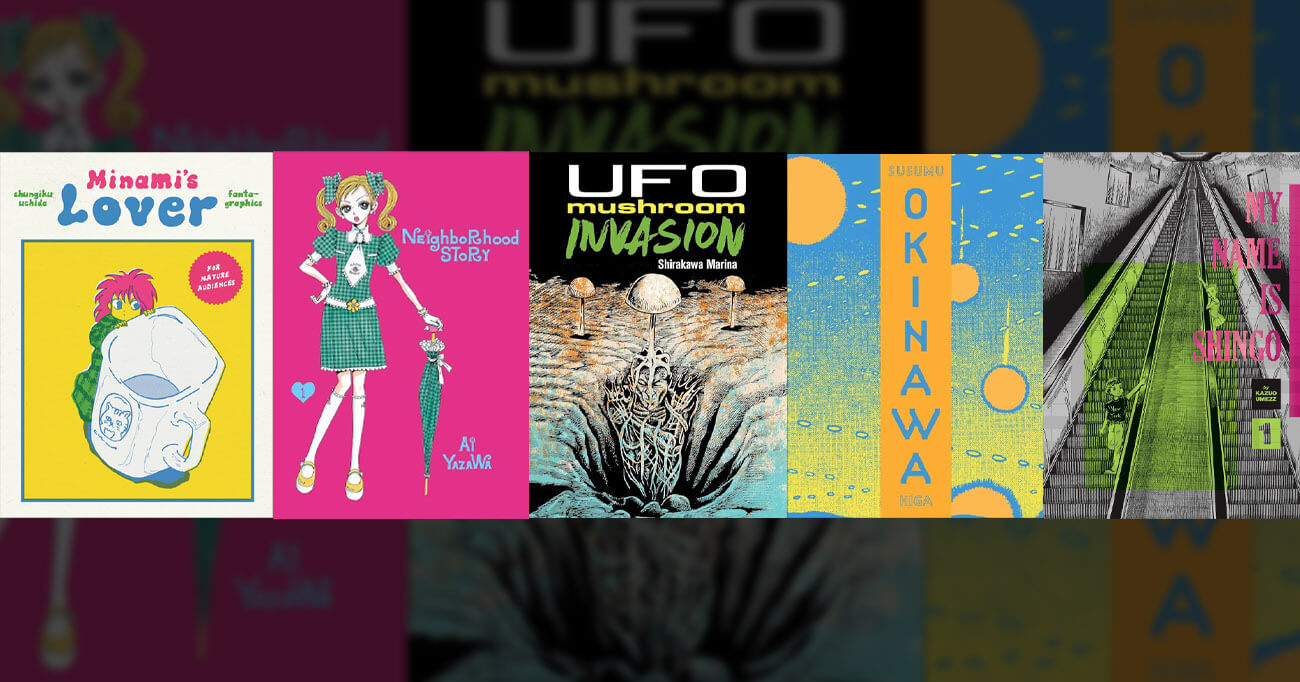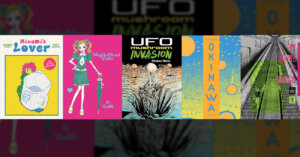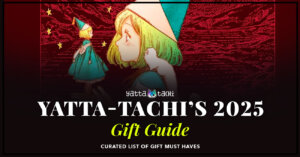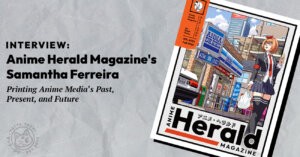The first American Manga Awards this year shone a spotlight on the hardworking letterers, translators and designers behind your favorite books. That alone would be enough to say the ceremony was worth it. But the Awards also included categories meant to recognize up-and-coming manga published in the United States: Best New Manga, Best Continuing Manga Series and Best New Edition of Classic Manga.
Of these three categories, Best New Edition of Classic Manga was undoubtedly the most stacked. The rules required that any books nominated had to be at least 20 years old before their publication in the United States. Yet that still allowed for a wide range of nominees including horror, romance, historical fiction and satire. I would have gladly held any one of these nominees up against the competition in other categories at the American Manga Awards, and save for a few exceptions, said “the older book is superior.” The newer books were no slouches, either!
Let that remind us of just how many incredible Japanese comics remain unavailable in English. It’s better than it was, certainly. You can now buy Shotaro Ishinomori’s Kamen Rider, or Rumiko Takahashi’s Urusei Yatsura. But there are so many other titles that, despite their quality and historical importance, publishers are convinced will never sell. The five books profiled below each demonstrate in their own way manga’s infinite potential.
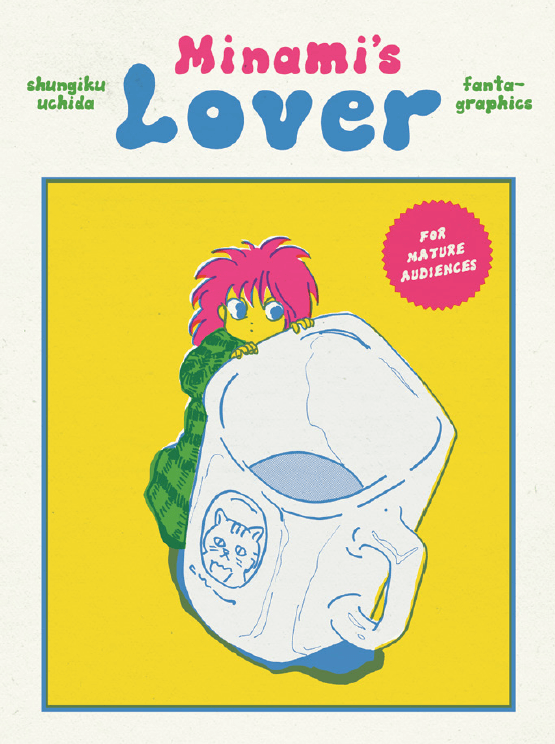
Minami’s Lover
Minami’s Lover originally ran in Garo, the famous alternative manga magazine that birthed such works as Screw Style by Yoshiharu Tsuge and Red Colored Elegy by Seiichi Hayashi. Unlike these strange comics, though, Minami’s Lover is deceptively cute. It tells the story of Chiyomi, a high school girl who one day shrinks down to six inches. She moves in with her boyfriend, Minami. The series has been adapted four times to television as a romantic comedy. In its original form, though, Minami’s Lover is a ruthless satire.
The artist Shungiku Uchida is a multi-talented writer, artist and actor. Minami’s Lover reflects her range of experience, addressing certain details another manga artist might not think about. For instance: wouldn’t being six inches tall in a world of normal sized humans be deeply lonely and alienating? How would a person in that state take care of their bodily needs? Could her stay of residence at Minami’s house be called an abduction? The ending of the series is impressively bleak, so much that it has been changed in every adaptation of the story. Yet it is also perhaps the only honest conclusion to Uchida’s bear trap of a comic. For more information (and spoilers), I wrote further about this book over on ANIWIRE.

My Name is Shingo
Kazuo Umezz is known for two things in the United States. The first is teaching Junji Ito, perhaps the single most popular and influential modern horror artist. The second is drawing The Drifting Classroom, a manga series about an elementary school that is transported into the far future, and the many terrible things that happen after that. These two achievements would be enough to ensure Umezz’s immortality. But they do not do justice to the breadth of his career as an artist. My Name is Shingo is proof. The series began serialization a decade after The Drifting Classroom in 1982. While it features much of what Umezz is famous for, it is also very different from his other works that have been translated into English.
Shingo is the adopted name of Monroe, a machine made for factory work. At first he had no other purpose than to move bolts on a conveyor belt. But then Satoru, the son of the factory’s technician, sneaks in and teaches him how to read. He and his soulmate Marin set Shingo on the path to consciousness. Did I mention that Satoru and Marin are both twelve year olds, yet are determined to have a baby? Reading My Name is Shingo means putting up with typical Umezz pain points like awkwardly drawn character movement and shocking violence against children. But nobody hates adults as much as Umezz, and My Name is Shingo demonstrates just how they fail a whole new type of child: the eponymous robot himself.
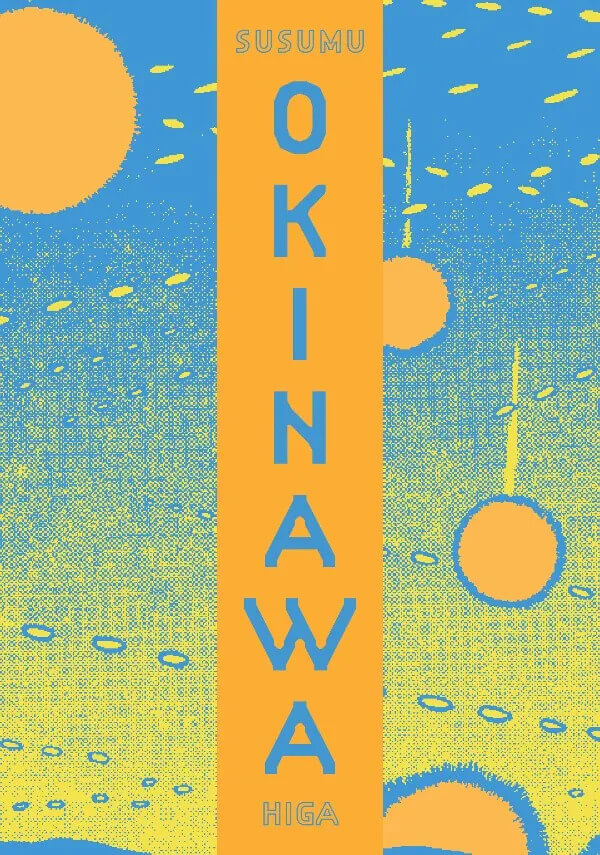
Okinawa
From April to June 1945, hundreds of thousands of people were slaughtered in the Battle for Okinawa. Not just 12,000 American soldiers, or 110,000 Japanese troops, but over 100,000 Okinawan civilians – a fourth of the island’s population at the time. After the United States won World War II, they occupied Okinawa and built air force bases there, just like Japan itself had once annexed the Ryukyu Islands. The effects of that occupation have been only rarely touched upon in Japanese media. The exceptions are either very recent (the 2023 Japanese TV drama Fence) or controversial in their time (Keiji Nakazawa’s Okinawa, which per Comics Journal had its book release canceled by the publisher.)
Susumu Higa’s Okinawa comics, though, which were serialized through the 1990s, approach the topic head-on. The early stories take place in the 1945 Battle of Okinawa. Later stories depict Okinawan citizens in the present as they navigate the contradictions of island life. Higa’s art is an acquired taste; reading through the series, the character drawings couldn’t help but remind me of King of the Hill. But I was impressed by his thoroughness, and by the fact that these comics were published in Big Comic (or at least, in its Extra Edition) for a mainstream audience.
The story of Okinawa’s English publication was similarly tough. Andrew and Christopher Woodrow-Butcher, together with translator Jocelyne Allen, first discovered Higa’s comics nearly a decade before its 2023 English publication. Publishers had no room for it in their schedules, and the timing wasn’t right to self-publish it. It took the launch of the podcast newsletter Mangasplaining Extra along with the help of Fantagraphics to ensure the project’s survival. Even then, trouble with their Chinese printer (who wanted to delete every reference in the text to Taiwan) delayed publication by an additional month. The book might have never made it out of Japan if not for everybody’s hard work.

UFO Mushroom Invasion
One of my favorite books is Manga Zombie, Takeo Udagawa’s guide to weird manga. Udagawa despises what he sees as formulaic comics that took over manga in the late 1970s. In response, his book champions weird artists like Masami Fukushima, George Akiyama and Taro Bonten, who he claims drew what they wanted at a time in history when this was still possible. Unfortunately many of these artists have never been published in English and likely never will. So I was very excited when Shirakawa Marina’s UFO Mushroom Invasion, the second manga title from Ryan Holmberg’s Smudge imprint at Living the Line, came with the Takeo Udagawa seal of approval.
First published in 1976, UFO Mushroom Invasion is a science fiction tale about invading alien mushrooms that threaten humanity. While the story follows typical lines, it is ahead of its time in some respects. The set-up, in which the mushrooms hitch a ride to Earth via a fallen alien spacecraft, recalls the Space Jockey in 1979’s classic film Alien. The means by which the mushrooms consume humans also recalls the real-life cordyceps fungus, which influenced the video game The Last of Us and its television remake.
In other respects, UFO Mushroom Invasion isn’t much like other comics at all. Multiple pages are dedicated to illustrations and text explanations of mushroom lore. The ending is also unrelentingly bleak, even for a horror manga. One image in particular, of a mushroom child on a swing set under the full moon, will stick with me for a long time.

Neighborhood Story
Ai Yazawa’s classic Neighborhood Story, the winner of this year’s Best New Edition of Classic Manga category, was published in 1995 via the shojo magazine Ribon. It follows childhood friends Mikako and Tsutomu as they grow together in arts school. Tsutomu likes Mikako, but also wants to explore the world outside of his neighborhood. Mikako, on the other hand, doesn’t know how to feel about Tsutomu’s sudden popularity. The two of them cross paths with many other vibrant characters including serious-minded Yuusuke and the gorgeous gyaru Mariko. Meanwhile, Tsutomu and Mikako ask themselves: are their feelings for each other friendship, love, or something else?
Yazawa went on to draw Paradise Kiss and Nana, which blended the sweetness of shojo comics with the emotional realism of josei. Even in Neighborhood Story, though, you can already see her strengths as an artist. The characters constantly change their clothes and presentation as their feelings change. They also express emotions that are pretty complicated for a magazine aimed at young readers. Mikako says early on that she believes nobody is a truly bad person, and Yazawa’s work demands that same empathy from her readers even as she tests their patience.
The other artists nominated, with the potential exception of Kazuo Umezz, are not nearly as popular in the United States as Ai Yazawa. Yet it still took until 2023 for an early Yazawa hit like Neighborhood Story to be licensed in the United States. How can we claim to understand her career when only a fraction of it is available in English? The same can be said for every other manga artist nominated this year. I hope that future ceremonies bring further opportunities to illuminate the medium’s long history.

Featured Sponsor - JAST
The sweetest romance and the darkest corruption, the biggest titles and the indie darlings; for visual novels and eroge, there's nowhere better.
Big thank you to our supporters
From their continous support, we are able to pay our team for their time and hard work on the site.
We have a Thank-You page dedicated to those who help us continue the work that we’ve been doing.
See our thank you page